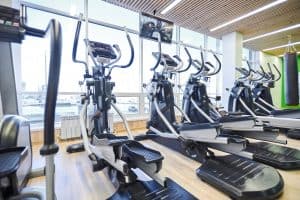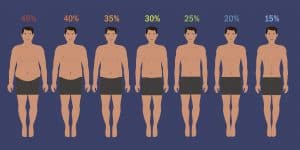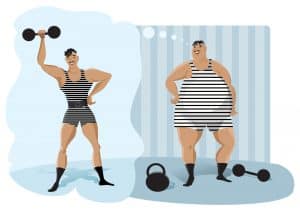Did you know that 82.4 million people in the United States don’t work out or stay active? Since you’re here, you may be one of those people starting a new journey.
When I first started working out, I couldn’t get enough of the tips and tricks people would share with me. Every time you improve, you’re getting more from your training session. Even if you’re already heading out to the gym a couple of times a week, there’s still a lot here for you to learn.
So, if your goal is to get fit and back in shape, I’ve got some simple yet effective workout and training tips for you. It doesn’t matter what your goal is. Whether it’s losing weight, building muscle or improving your endurance, these tips may be just what you need to succeed.
1
Don’t Skip the Warm-Up
Let’s be honest—who really enjoys a warm-up? If you’re like me, you want to get straight to the hard work. But despite how we feel, skipping a warm-up is a bad idea.
In fact, you’re likely to suffer an injury if you jump right into a high-intensity training session. The bottom line is, just a few minutes of performing a warm-up can save you from injury in the long run. It increases blood flow and warms up the muscles.
Yet a warm-up doesn’t just prepare your body for exercise—it can actually boost your performance too. One study demonstrated that a warm-up helped to improve the performance of participants.
So it’s time to get stretching. There’s been a popular rumor I’ve heard around the gym that stretching can do more harm than good.
But I can confirm that this is indeed a myth. A warm-up of stretching has been proven not to decrease muscle strength or power. So there are no excuses for skipping the warm-up.
2
It’s All About Form
Everyone wants to lift heavy in the gym, moving up weights as fast as possible. It’s your goal to get your hands on those heavy dumbbells on the rack, right?
Of course, everyone wants to progress during strength training. I definitely used to be guilty of rushing workouts. But I soon learned that this desire and impatience should never come at the expense of form. After all, you don’t want an injury that’s going to keep you on the sidelines.
What do we mean by form? Well, it’s about performing your strength training exercise in the correct way.
For example, to perform a bicep curl with proper form, you’ve got to stand with your back straight. Take a dumbbell in each hand, keeping your elbows close to your sides. Palms should be facing forward. The arms should remain still while you curl the weights using your biceps.
If you’re just starting out, it’s maybe best to learn the movement without any weights at first. You want to isolate the muscle group and focus on aligning your body in the correct way for your set.
Having a proper form may avoid strains and injuries. Trust me—while you think lifting heavy achieves results quickly, it really doesn’t. It’s all about form and then you’ll see real gains.
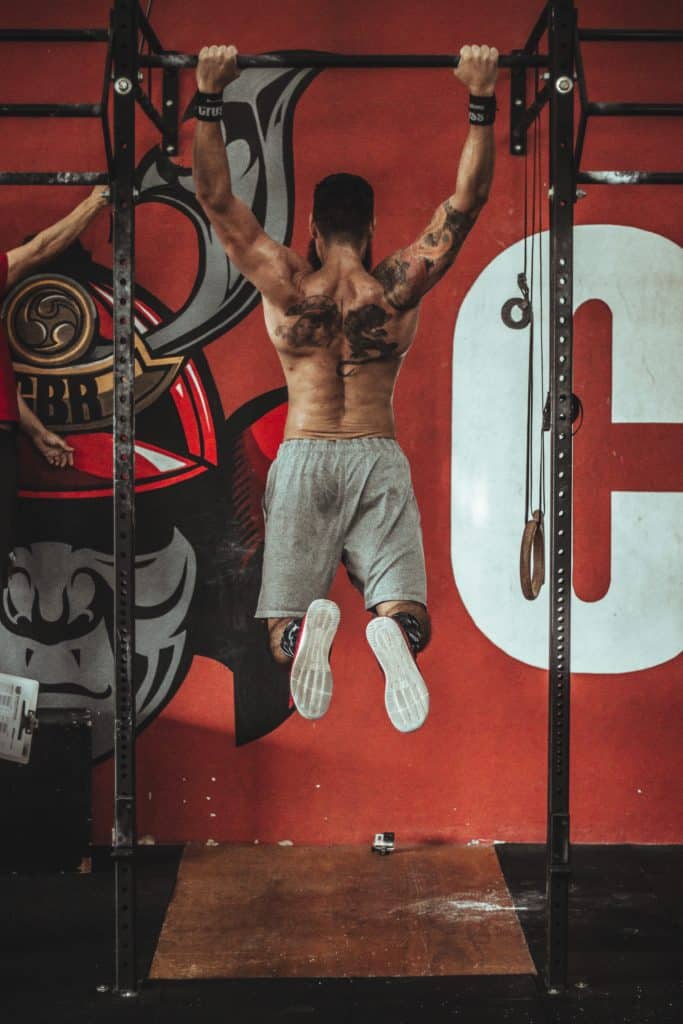
3
Overload the Muscles
You want to build muscle during your workout, right? This means that you’ve got to overload the muscles using resistance training. In other words, you’ve got to use weights that are heavier than your muscles and that create resistance.
How do you choose the right weight for your workout? Well, if you’re a beginner, it might be trial and error at first. You may have to start light and see how it feels.
The main tip is that you should find the last few reps hard. Don’t forget that your form is crucial.
Start by doing up to 16 repetitions with the weight that you’ve chosen. For the second set, try increasing the weight and see if you can still perform 16 reps. If you can’t lift this weight, go back to your original and start there. If you can, keep repeating this until you find the right weight.
The general rule is that larger muscles should be challenged with heavier weights. For example, your thighs are going to be able to handle a heavier weight than your abs will. So don’t be scared to start with a high number.
You’ll lift heavier on a machine when you’re using both legs or arms too, as opposed to dumbbells. This is because you’re using both limbs together, rather than independently lifting the weight.
4
Increase Your Weight Slowly
When you first start resistance training, you can get overly excited and want to keep moving up weights. I was guilty of this when I first started, but I soon realized it was actually slowing down my progress.
While you want to challenge yourself during training, you don’t want to sacrifice your form. You run the risk of doing this if you move up weights too quickly. Of course, workouts should never feel easy. It should feel like you’re pushing your muscles to the limit.
Increasing your weights may also be the best way to avoid adaptation. This is when your body gets used to the exercises that you keep doing. Muscle adaptation may start anywhere from four to 16 weeks. After this time, you’ll hit a plateau and stop gaining as much from your training.
If you don’t think you’re quite ready to move up to the next weight, you can always increase your repetitions or sets. Just make sure that you’re doing more and shaking up your training to keep your muscles on their toes. It’s all about progressive overload.
5
Use the Right Breathing Technique
Breathing is an important element of exercise. This means that using the right technique is really going to help your workout.
When you’re exercising, your lungs deliver oxygen to your body and it’s the heart that pumps the oxygen out to your muscles to use. If you’re not breathing properly during exercise, you may start to feel dizzy and light-headed.
When you’re pushing yourself through your workout, be sure to keep a rhythm going. When you’re lifting or pulling, exhale. Then when you are returning to your neutral position, deeply inhale some fresh air. It can make your training a lot more productive.
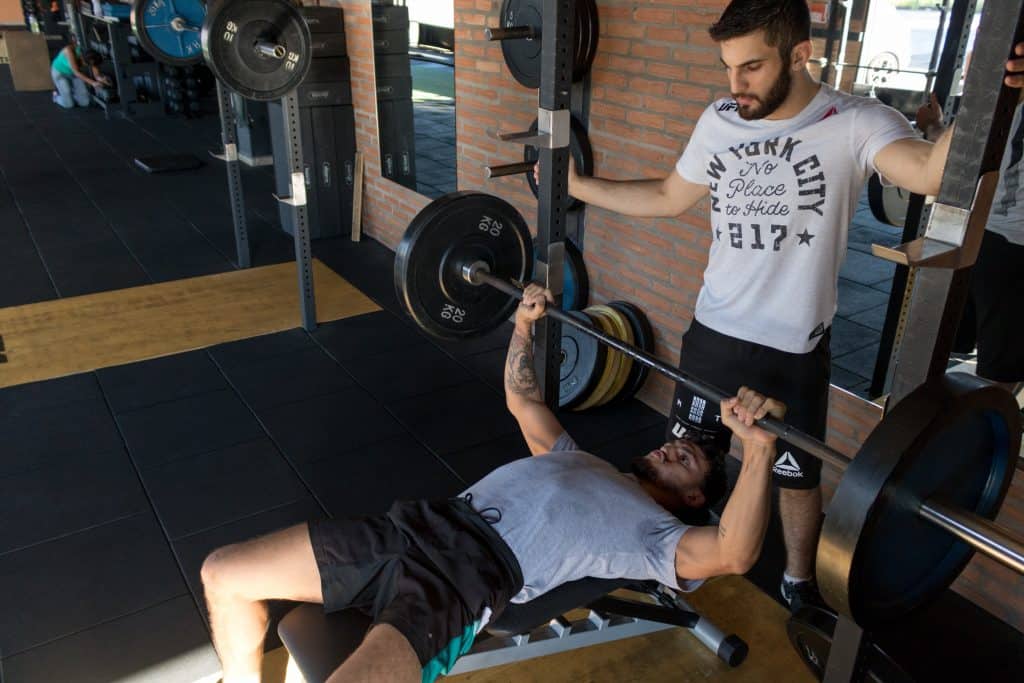
6
Figure Out Sets and Repetitions
When you’re talking about resistance training, you’ll hear everyone banging on about their sets and repetitions. It may be boring for you to listen to, but it’s an essential element of a successful workout plan.
What do they mean? A repetition, or rep, is the number of times that you lift or complete an exercise. For example, if you’re doing 12 reps of squats, you’re squatting 12 times in a row without stopping.
A set is going to be the number of times you perform your reps. In other words, say you’re doing three sets of 12 reps. This means you’re going to deadlift 12 times for one set then have a break. You’ll repeat this pattern another two times to complete your three sets.
There’s some flexibility on the number of reps and sets you do during your training. Of course, different goals will have different sets and repetitions.
It’s recommended to look at between eight and 12 repetitions, performed for two or three sets. In addition, a short rest will help you to recover between sets. There’s a rumor that the more reps you do in one set, the more fat you burn. This isn’t necessarily true.
7
Create a Workout Schedule
There’s nothing worse than turning up to the gym, or trying to work out at home, and you don’t know what you’re doing. This can often lead to wasted time and not training specific muscle groups effectively. In other words, you may not reach your fitness goals.
That’s why it’s essential to create your own workout schedule. I’d recommend targeting all of the major muscles of the body. Nobody wants to be called “chicken legs” because they only worked their upper body at the gym.
So I’d say work out each major muscle group two or three times a week. Write it all down so that you know your schedule for the week ahead.
Remember what they say: fail to prepare, prepare to fail. Of course, what’s more important than creating a workout schedule? Making sure you stick to it!
8
Select Your Exercises
Let’s not forget that working out should be fun. While we can get wrapped up in our long-term goals and what we want to achieve, it’s the enjoyable training sessions that get us to the gym every day. That is how you see results.
So if you’ve created your workout schedule already, you’ll know what day you’re working each muscle group. Now you’ve got to choose the exercises you want to perform.
If you’re a beginner, be sure to learn how to use the machines at a gym beforehand. We’ve all seen those viral videos of people using gym machines wrongly; you don’t want to be next.
Let’s break it down into upper and lower body workouts and you can choose which ones you want to include in your schedule.
Upper body:
- Bench presses for the chest.
- Lat pulldowns for the back.
- Overhead presses for the shoulders.
- Dumbbell curls for the biceps.
- Kickbacks for the triceps.
Lower Body:
- Deadlifts for the thighs and hamstrings.
- Calf raises for the calves.
- Squats for the thighs and glutes.
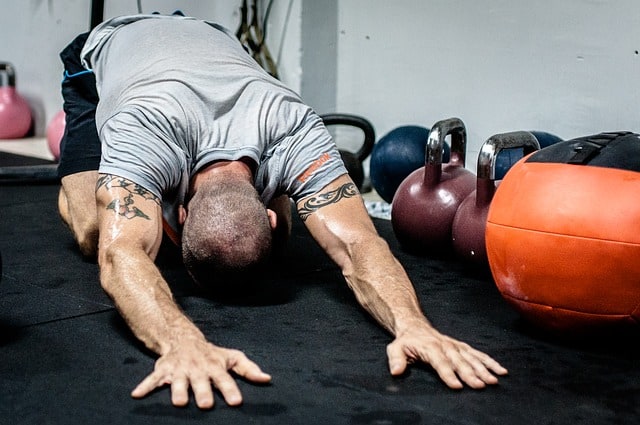
9
Cool Down Afterwards
You’ve put your heart and soul into that workout and it’s finally time to head home for the reward of dinner. Does this sound familiar?
The temptation is to run for the changing rooms and get back home. But you’ve got to stay for a cool down after your training. I know it’s the last thing you want to do after a hard workout, but It’s essential.
Why bother with a cool down? Well, it may be a way to reduce the possibility of suffering muscle soreness after a tough training session. Certainly, a study found that stretching reduces muscle soreness in the 72 hours following a tough workout.
When your muscles are sore, you might avoid training for a few days. So if you spend a little bit of time stretching the muscles you’ve used, you may be able to stick to your training program and see better results.
10
Rest Days Matter … A Lot
A common myth is that working out and training every single day will get you better results. While this might sound like it would work, it doesn’t apply to strength training.
We can all be guilty of underestimating rest days. But don’t forget that your body needs time to recover. While you may think your bigger muscles are gained in the gym, they’re actually achieved through rest and recovery.
During strength training, the muscle fibers are damaged. But don’t worry, it’s a good thing. Through rest, these fibers will become thicker and bigger, which will lead to muscle hypertrophy. This means you’ll grow stronger and your muscle mass will increase.
So, we can see that rest is essential for building muscle. You may want to leave around 24–72 hours between training sessions for recovery. Plus, make sure you get a good night’s sleep too. Your body will thank you for it.
Takeaway
If you’re serious about wanting to see results in the gym, you’ve got to make changes to your fitness regime. Ultimately, if you don’t put the work in and prepare, you’re not going to see the changes you want to achieve.
With these training tips, you can get started today. One of the main lessons to take away is that warming up and cooling down are just as important as the main workout itself.
The key to progress is not only progressive overload of the muscles, but also practicing good form. Take your time to master the movement before you pick up the weights. In addition, focus on your breathing to provide your muscles with the oxygen they need.
Last but not least, make sure you’re prepared before you set foot inside the gym. Create a workout schedule and decide on your exercises, reps and sets before you get started. Don’t forget to pencil in your rest days so you can reap your rewards. Oh and I almost forgot—remember to have fun!
Do you have any good workout or training tips you’d like to share? Feel free to leave your comments or suggestions for other readers. Or if you have any questions you can leave them below and I’ll do my best to answer them.






